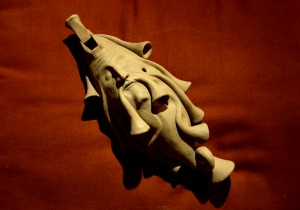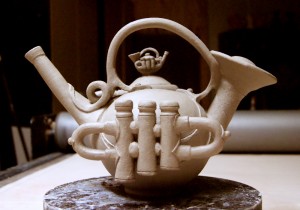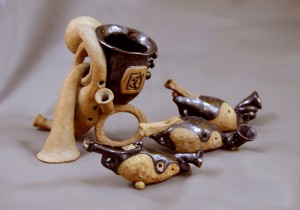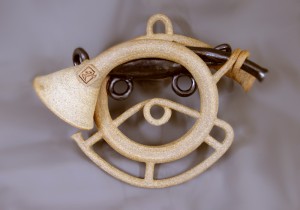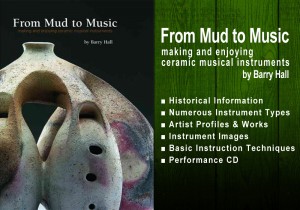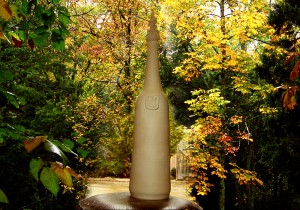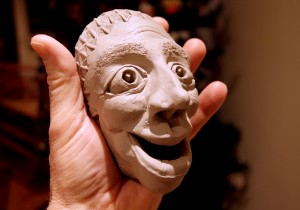 If there is a pattern in my recent work, it is a fascination with portrait sculpture, particularly the capturing of human emotion via facial expressions. Students in Clay I constructed some really interesting, multimedia clay masks last semester while I was sequestered in a corner of the lab carving architectural pieces for this month’s show. As a testament to the influence of learning communities, I must confess that those masks were an influence in the mini-mask direction that you see here.
If there is a pattern in my recent work, it is a fascination with portrait sculpture, particularly the capturing of human emotion via facial expressions. Students in Clay I constructed some really interesting, multimedia clay masks last semester while I was sequestered in a corner of the lab carving architectural pieces for this month’s show. As a testament to the influence of learning communities, I must confess that those masks were an influence in the mini-mask direction that you see here.
I still refer to Philippe and Charisse Faraut’s book, Mastering Portraiture- Advanced Analyses of the Face Sculpted in Clay, on a regular basis. There is so much great information on the art and anatomy of portrait sculpture illustrated in the book, I consider it a must-have companion when sculpting clay faces. I am still hopeful that this summer’s travel schedule will not conflict with an opportunity to study directly under Philippe at a weekend workshop somewhere close.
A full-scale portrait sculpture still takes me all day to complete, but these hand-sized studies can be pinched from a fist-sized ball of clay and completed in about three hours. It does get a little easier to do with practice…and a review of the first of these with the last of these seems to tell me that I am making progress. Ultimately, I envision 5-7 of these little guys displayed together in some sort of installation…that’s not a completely original concept, but it is new to me.
So, here I am facing 2012…and looking forward to the adventure!
